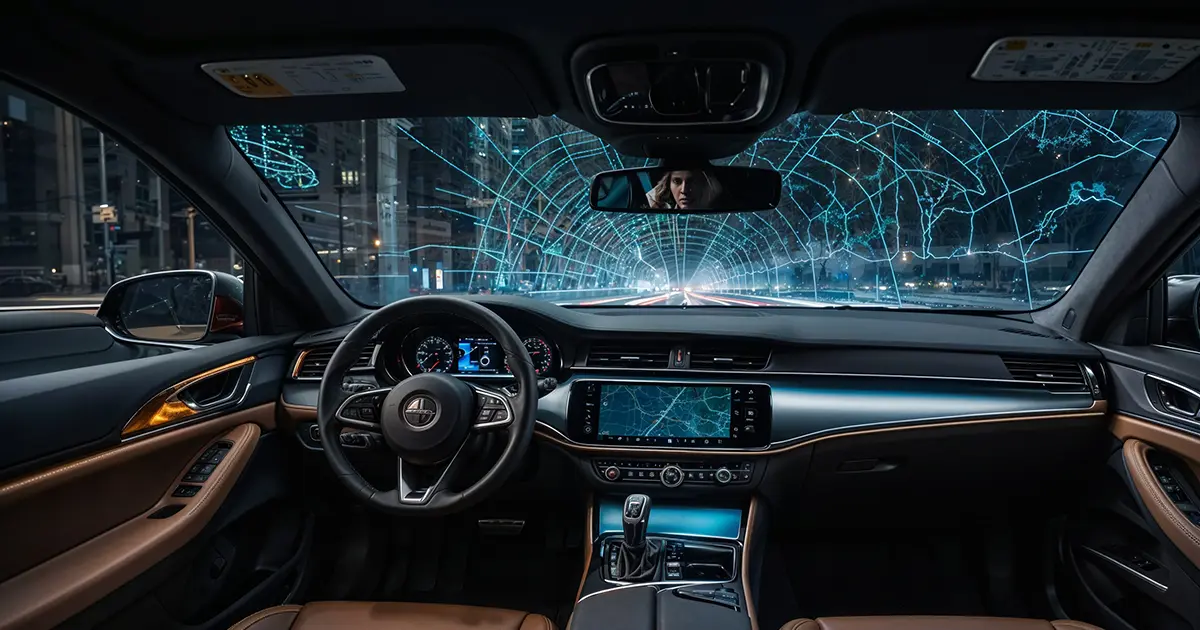Navigating with AI: A Beginner’s Guide to Smarter Travel
Discover how artificial intelligence is revolutionizing navigation systems, making it easier than ever to find the quickest and most efficient routes. From the early days of GPS to today’s AI-powered devices, learn how these advancements can improve your daily travels.
Introduction: Navigating the World Made Easy
Have you ever set out on a journey and wondered how people used to find their way without modern technology? Navigating from one place to another has evolved dramatically over the years. In the past, travelers relied on physical maps, compasses, and even the stars to guide them. Today, with the touch of a button, we can access real-time directions that guide us through the most efficient routes, avoiding traffic jams and roadblocks. This transformation is largely due to the integration of artificial intelligence (AI) into navigation systems. In this article, we’ll explore how AI has changed the way we navigate and how even those unfamiliar with technology can benefit from these advancements.
The Birth of Early Navigators
Before the digital age, navigation was a manual process. Drivers kept paper maps in their glove compartments, unfolding large sheets to plot their routes. This method was not only time-consuming but also prone to errors. The late 20th century saw the introduction of the Global Positioning System (GPS), initially developed by the U.S. Department of Defense for military purposes. GPS technology was eventually made available for civilian use, leading to the creation of the first electronic navigators.
Early GPS devices, such as the original models from Garmin and TomTom, provided users with basic turn-by-turn directions. These standalone devices calculated your position using signals from satellites orbiting the Earth. While revolutionary at the time, they had limitations. Maps were stored locally on the device and needed manual updates via computer connections. They couldn’t account for real-time traffic conditions, accidents, or road closures, often leading drivers into unexpected delays.
Limitations Before AI Integration
Before the integration of AI, navigation systems were relatively static. They calculated the shortest distance between two points without considering dynamic factors that could affect travel time. For example, if there was a traffic jam due to an accident, the navigator wouldn’t know and would still direct you through the congested area. The lack of real-time data meant that drivers had to rely on radio traffic reports or simply hope for the best.
Moreover, updates to the maps were infrequent. Users had to connect their devices to a computer to download the latest maps, which was a cumbersome process. This often resulted in outdated information, such as missing new roads or being directed to roads that no longer existed. The absence of internet connectivity limited the functionality of these early navigators.

AI Revolutionizes Navigation
Today, artificial intelligence has transformed navigation systems from simple direction providers into intelligent assistants that enhance our driving experience. So, what exactly is AI in a navigator, and how does it work?
At its core, AI in navigation systems uses advanced algorithms and machine learning to process vast amounts of data in real-time. When you enter your destination, the AI doesn’t just calculate the shortest path; it analyzes multiple variables to find the most efficient route. Here’s how it works:
Several companies have been pioneers in integrating AI into their navigation systems. Google Maps and Waze (owned by Google) are popular smartphone applications that use AI extensively. They collect data from millions of users to provide real-time traffic updates and route optimizations.
In terms of physical navigators for cars, companies like Garmin and TomTom have introduced AI-powered models. For example:
- Garmin DriveSmart 65 with Amazon Alexa: This device combines Garmin’s navigation expertise with AI voice assistant Alexa, allowing for voice-controlled navigation, real-time traffic updates, and smart route planning.
- TomTom GO Supreme: This navigator uses TomTom’s advanced algorithms to offer smart routing, live traffic updates, and predictive route guidance.
Car manufacturers are also integrating AI into their in-dash navigation systems:
- Tesla’s Autopilot Navigation: Tesla vehicles come equipped with AI-powered navigation that not only provides route guidance but also assists with driving functions.
- BMW’s iDrive System: BMW’s latest infotainment systems use AI to learn the driver’s habits and preferences, offering personalized route suggestions.
- Mercedes-Benz MBUX Navigation: This system uses AI to provide augmented reality navigation overlays and predictive traffic information.
These AI-powered navigators continuously learn from user behavior and improve over time, making navigation more accurate and efficient with each use.

Benefits of AI-Powered Navigation
AI-powered navigation systems offer a host of benefits that enhance the driving experience:
- Real-Time Updates: Stay informed about traffic congestion, accidents, and road conditions as they happen, allowing you to adjust your route on the fly.
- Predictive Analysis: The AI can anticipate traffic build-ups before they occur by analyzing patterns, helping you avoid potential delays.
- Personalized Routes: The system learns your driving habits and preferences, such as favoring highways over local roads, to provide route suggestions tailored to you.
- Voice Assistance: With AI voice assistants integrated into navigators, you can control the device hands-free, ensuring safer driving.
- Augmented Reality (AR): Some advanced systems overlay navigation instructions onto real-world views, making it easier to follow directions.
Key Features to Look For
When choosing an AI-powered navigator, consider the following:
- Connectivity: Devices with constant internet access provide the most up-to-date information.
- User Interface: A simple and intuitive interface makes it easier for beginners to use.
- Voice Control: Hands-free operation enhances safety and convenience.
- Regular Updates: Systems that receive frequent updates stay accurate over time.
Getting Started Is Easy
You might think that using such advanced technology is complicated, but it’s designed to be user-friendly, even for those new to tech. Here’s how you can get started:
Expanding Your Horizons
Even if you’re not tech-savvy, delving into our materials can help you understand and utilize AI in your daily life. We break down complex concepts into simple, easy-to-understand language. By spending a little time reading our guides, you’ll find that technology isn’t as intimidating as it seems. Soon, you’ll feel more confident not just in navigating roads but also in navigating the ever-evolving world of artificial intelligence.
Explore More with Us
Artificial intelligence has made navigation smarter and our lives easier. By embracing these technologies, you can save time, reduce stress, and arrive at your destinations more efficiently. Whether you’re a seasoned driver or new to the road, AI-powered navigation offers tools that cater to everyone’s needs.


















